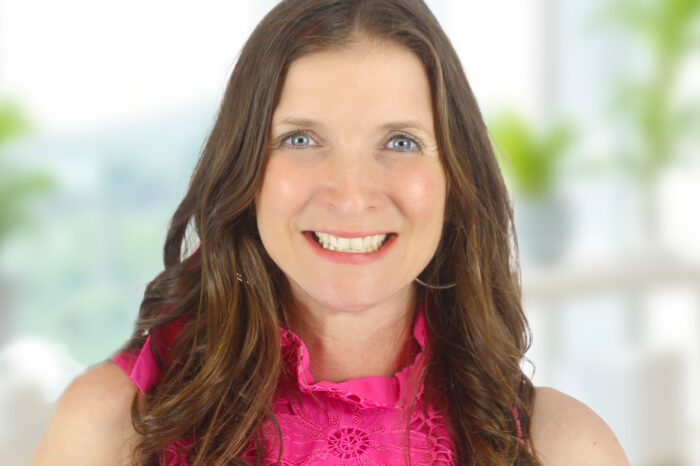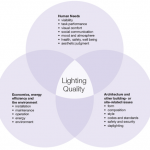Lighting, Quality & Training … the Role of Distribution?
Lighting has been going through a revolution that has transformed the space. Aside from the reduction in lamp sales, increases in fixture sales, accelerated interest and increased functionality in lighting controls, reps entering the market, the explosion in the retrofit market and a plethora of new “manufacturers”, there is also the discussion regarding “quality lighting.”
Craig DiLouie interviewed Brian Vedder, product marketing manager for Signify in January for an upcoming article he is writing and shared elements of his interview on www.lightnowblog.com (which is an informative read). The posting on Craig’s site is an interesting read. Below are some elements that were most intriguing from a distribution viewpoint … and then some questions to consider:
The Interview
DiLouie: I am increasingly seeing industry leaders voicing concern that the industry has strayed from its focus on end-users and needs to return to promoting lighting quality. Do you agree with this assessment?
Vedder: Yes, and lighting quality is different for each end user. Even though personal preferences can’t be altered, a degree of standardization and criteria for light quality should be made to give distributors the tools necessary to help their customers identify and obtain the right product for the right application that best meets their needs and project goals.
DiLouie: Part of the challenge with quality lighting is it’s hard to define. How do you define it?
Vedder: Light quality is very subjective by nature. However, there are several light characteristics that are universal. These factors include color-consistency, color uniformity and application-specific lighting. A combination of these factors when applied to the customer’s liking will make products or spaces appear in the most natural way as possible, without light distortion, and with uniform distribution. The goal is to do all of this in a robust, long- lasting platform at a competitive price point.
DiLouie: What are the attributes of a lighting product best suited to produce quality lighting?
Vedder: Quality isn’t just about lighting up a space, but rather, it’s about adding the correct amount of light most suited for that space. This ability to choose the best color temperatures and spectrum for different spaces is a game changer with which traditional light sources simply cannot compete.
To optimize sales in a retail store, for example, a lamp that makes objects as realistic as possible is best on the human eye. Not only does quality lighting enhance products on display in a store, but it gives customers a sense of reality when looking to make a purchase. This prevents the customer buying the “perfect” color in store, only to realize it is quite different out in the sun or at their favorite hangout. By using light that doesn’t distort reality, merchandise is rendered in more appealing ways to customers, resulting in increased store sales.
DiLouie: One of the disadvantages of quality lighting is typically a higher cost. How does quality lighting demonstrate value and ROI, and how can owners evaluate it?
Vedder: While cost is an obvious consideration, a simple retrofit of LED lamps has an almost immediate payback, as “plug-and-play” installations dramatically cut labor and installation costs, without a need for time-consuming re-wiring projects. When compared many traditional lighting technologies, LEDs save on the order of 50 to 80 percent. The energy savings alone provide payback periods of 2 years to less than 1 year. Combine energy savings with LEDs longevity and maintenance savings, and the payback only improves. While the LEDs cost more per lamp, store owners would have to buy 5 to 10 conventional lamps over the lifetime of one LED.
DiLouie: What are the advantages for electrical distributors to become more aware of quality lighting issues and promote top-tier products?
Vedder: Learning about the diversity in products and applications is the biggest advantage for electrical distributors. The more they learn about how certain products operate in specific applications, the more likely it may be for potential revenue streams to open with current customers looking to upgrade to quality LEDs. Additionally, future customers who may be in the market to make a lighting upgrade, but who don’t know which top-tier products to select for their particular application will need guidance. It is lighting expertise that will help a distributor stand out and create value.
DiLouie: What can electrical distributors do to become more educated about quality lighting?
Vedder: Distributors should consider partnering with a lighting expert to pair the right quality of light for their application. That isn’t unlike the role of a wine sommelier in a restaurant. Only, instead of recommending the wine that will pair best with your meal, our lighting “sommelier” can act as customer consultant to help pair the right lighting attributes with desired applications. And, just as a wine sommelier learns to recommend the best pairing by studying specific qualities in the wines they taste, so too can a lighting distributor learn to evaluate LEDs for color quality, uniformity, durability, lighting output and flexibility in products for each application.
DiLouie: What role can lighting controls (and possibly the Internet of Things) play as partners with good lighting to enhance lighting quality?
Vedder: As connected lighting systems with integrated controls become mainstream, it can reduce energy use and costs up to 80 percent as compared to traditional lighting. Further, LED lighting controls offer end users more customization to tune color temperature, optimizing operations and create a more comfortable, productive environment for building occupants in an office, a school, a store, or any number of applications. Ultimately, IoT lighting can also alert a contractor or distributor that the light is beginning to fail. This will help the contactor plan maintenance, ensuring they have the right product ready before the light goes out.
DiLouie: If you could tell the entire electrical industry just one thing about quality lighting, what would it be?
Vedder: Quality is hard to define, and it is an ongoing challenge. When two lights shine side by side, customers will choose what they perceive to be the best lighting for their needs. Distributors need to consider working with lighting experts who have the deep expertise to properly pair the right LED lighting to their application. This can prove to be invaluable for potential product sales, especially as LEDs become more affordable and as they become the most reliable, durable and color-consistent source of lighting over traditional lighting sources.
The bottom line: making the switch to LED lighting has never been an easier choice.
So, some questions:
- Perhaps distributors should ask the major lighting manufacturers, who are not capturing as much of the renovation market as they desire, what percent of their marketing budget, and/or sales, are they investing in marketing to contractors?
- What are they doing to train contractors on “quality lighting?”
- What marketing is done, for key verticals, to reach renovation project decision-makers to educate them on quality lighting?
- How did this “education” gap get created?
Realistically, asking distributors to influence decisions that contractors may be making, which frequently is driven by price and availability given that they perceive a commodity-oriented product environment, isn’t a viable strategy. When distributors are involved in the front end of a project, they can make recommendations and many have qualified lighting specialists and/or salespeople with extensive lighting experience (and/or have received lighting training), but much of the issue needs to be driven down to the “customer” level or, in other words, where the money decisions are made.
And, as an FYI, I am presenting at the upcoming NAILD conference on “Capturing Greater Share of the Renovation Market.” The conference is open to all.
Getting the Right Training, and to Whom?
NAILD’s LS training series (and NAILD has discounts for IMARK and NEMRA members) provides a good lighting foundation for distributor sales and lighting personnel but for more “feet on the street” manufacturers who have a vested interest in “quality lighting” may want to consider initiatives to reach downstream. Most of these manufacturers are considered “premium” suppliers (and are branded). The challenge is that, at least perceptually, contractors in may instances don’t either understand the “quality lighting” difference, can’t sell the differential or are more focused on getting “the right price” to ensure they meet specs and earn the project.
And perhaps this question may elicit some best practices … “Distributors / Reps / Agents – which manufacturers do the best from a lighting education viewpoint? In providing tools to educate / market the issue to contractors and within your geographic market?”
Moving the market “back up” would benefit many through increased sales, improved profits, perhaps less product quality issues and more, but, the questions are, “how”, “is it realistic”, “what percent of the market could it affect?” and “who will (or is) making the investment?”
Or, is the market “too far gone?”
Thoughts?























